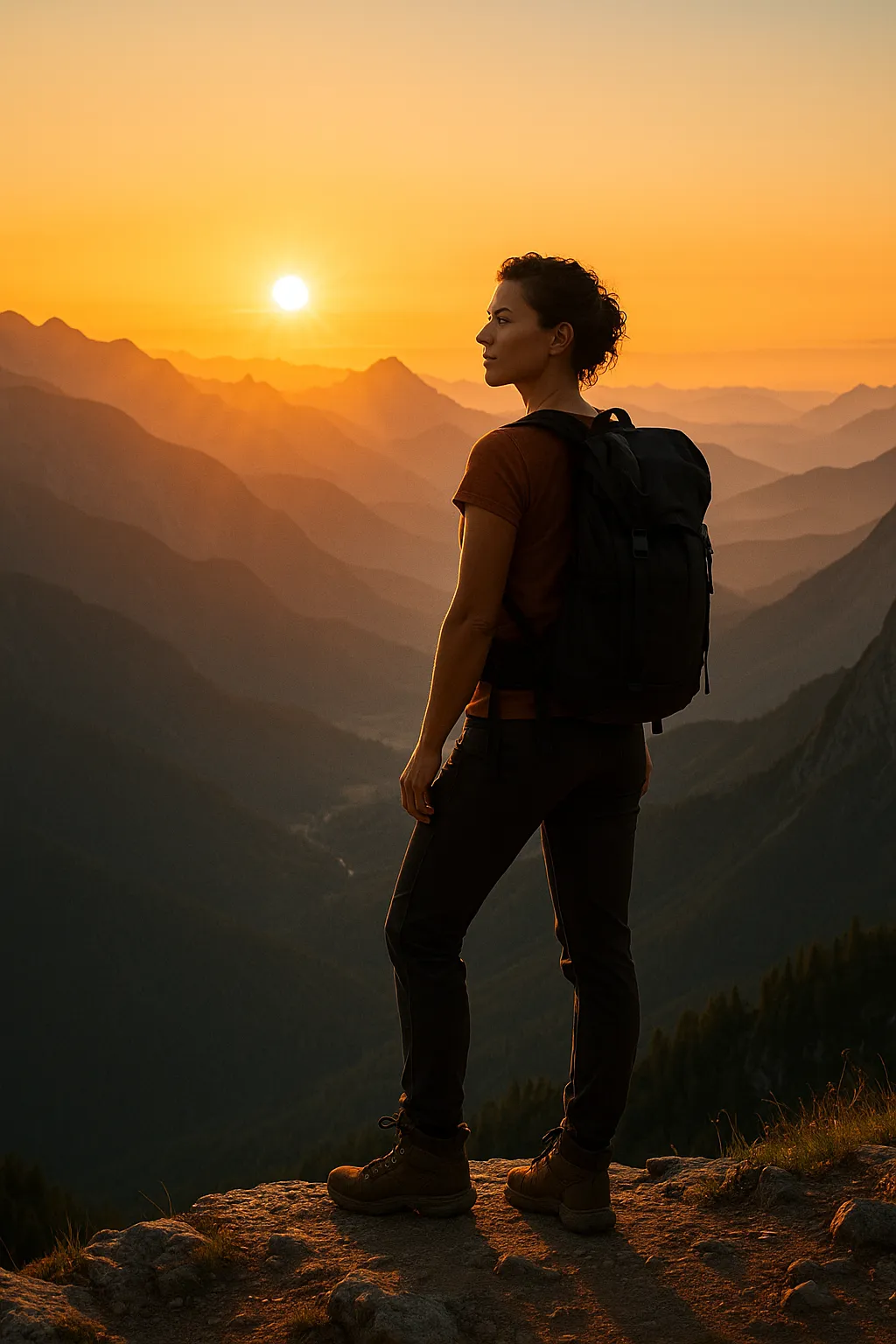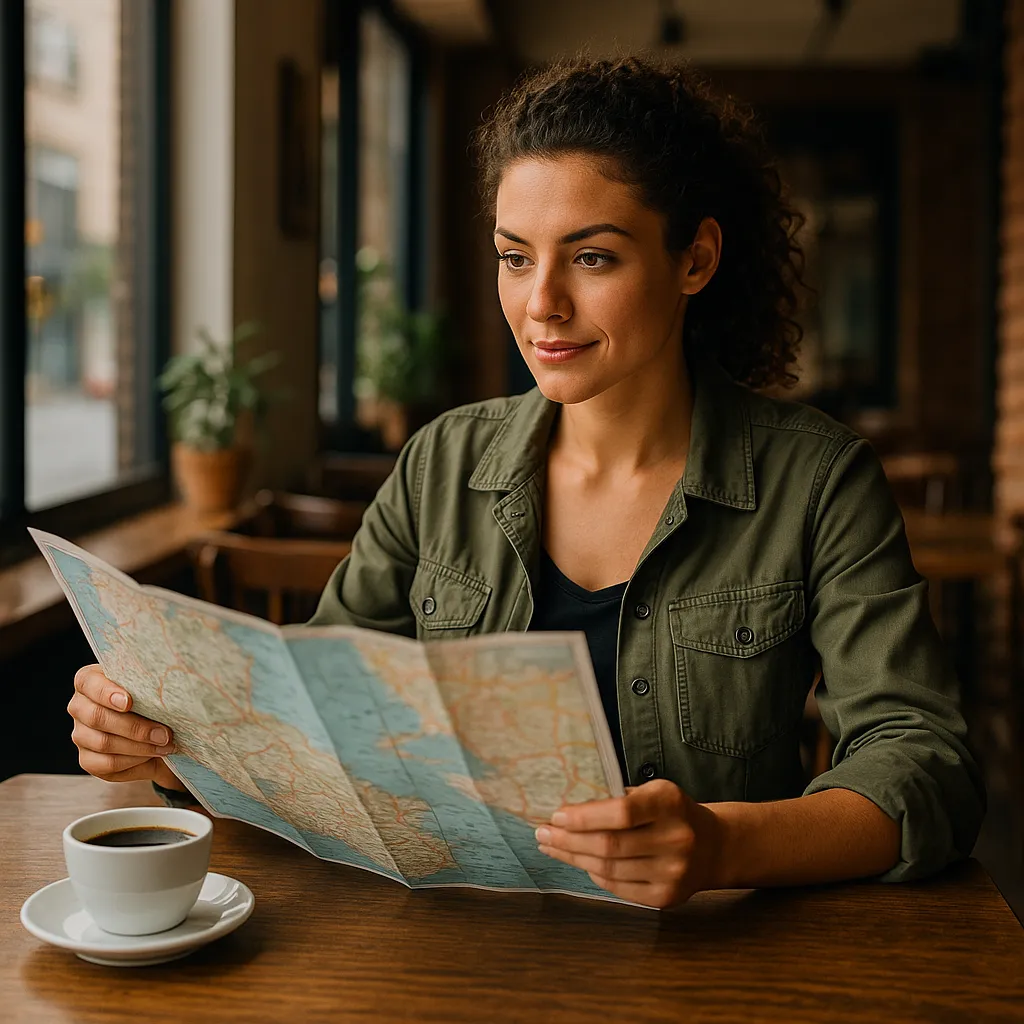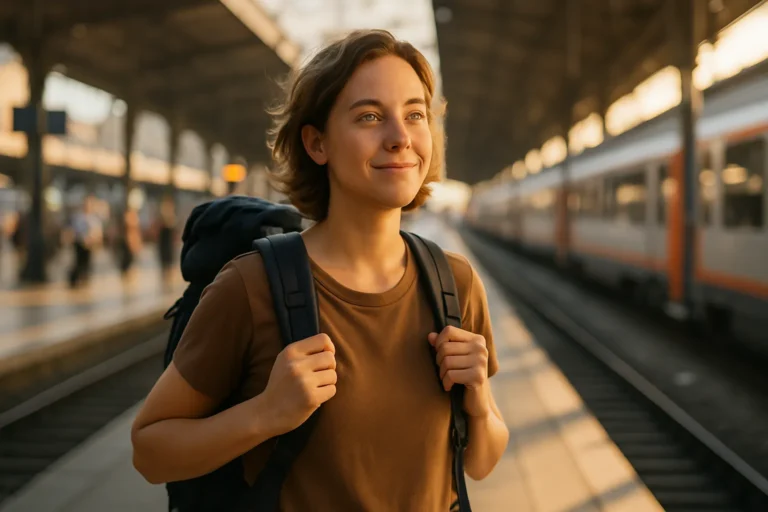On This Page
The decision to embark on your first solo travel adventure is a powerful one. It’s a promise you make to yourself to embrace independence, discover the world on your own terms, and push past your comfort zone. But alongside the exhilarating thoughts of newfound freedom, a nagging question often appears: “Is it safe?” The answer is a resounding yes, provided you approach it with awareness and preparation. Safety during solo travel isn’t about fear; it’s about empowerment.
Being safe while traveling alone doesn’t mean restricting your experiences. It means equipping yourself with the knowledge to navigate new environments confidently. This guide is designed to do just that. We’ve compiled the 10 essential safety tips every beginner needs to know, curated from countless miles of solo journeys. This is your practical, no-nonsense checklist to ensure your first solo trip is not only safe but truly transformative.
The 10 Essential Safety Tips for Your First Solo Trip
Follow these steps to build a strong foundation of safety and confidence before and during your trip.

1. Research Your Destination Like a Pro
Your safety journey begins long before you board a plane. Thorough research is your first line of defense. Go beyond tourist blogs and look into the specific customs, laws, and potential safety concerns of your destination. Understand which neighborhoods are considered safe for tourists and which to avoid, especially at night. A great resource is the U.S. Department of State’s Travel Advisories page, which provides detailed, country-specific safety information. Knowing the local context is a crucial first step for any solo travel experience.
2. Share Your Itinerary (and Keep It Updated)
Independence doesn’t mean being invisible. Before you leave, share a detailed copy of your itinerary with a trusted friend or family member at home. This should include flight numbers, hotel addresses and phone numbers, and a general outline of your plans. During your trip, check in with them regularly. This simple habit ensures that someone always knows where you are supposed to be, providing a critical point of contact in case of an emergency.

3. Arrive During the Day
This is one of the most practical and impactful of our 10 essential safety tips. Whenever possible, book flights that arrive at your destination during daylight hours. Navigating a new city, finding your accommodation, and getting your bearings is significantly easier and safer when you’re not doing it in the dark. Arriving in the daytime gives you a chance to understand the layout of the area and identify safe routes and landmarks.
4. Blend In and Act Confident
Tourists are often targets for scams and petty theft. Your goal is to look less like one. Pay attention to how locals dress and aim for a similar, inconspicuous style. Avoid flashing expensive jewelry, cameras, or large amounts of cash. Beyond your appearance, your body language is key. Walk with purpose and confidence, even when you’re lost. If you need to check a map, step into a cafe or shop rather than standing bewildered on a street corner. Projecting confidence makes you a less appealing target.
5. Secure Your Valuables (and Yourself)
Never keep all your valuables in one place. Distribute your cash, credit cards, and a copy of your passport into different locations—some in your wallet, some in a secure pocket, and some left in a locked safe at your accommodation. Consider using an anti-theft bag or purse with slash-proof straps and locking zippers. When it comes to personal security, always be aware of your surroundings, especially in crowded places like markets and public transport.
6. Be Smart About Accommodation
For your first solo travel experience, choosing the right place to stay is paramount. Read recent reviews and pay close attention to comments about safety and location. Choose a hotel or hostel in a well-lit, reputable neighborhood. Once you check in, ensure your door has a solid lock and consider carrying a simple rubber doorstop for extra security at night.
7. Trust Your Gut Instinct
This might be the most important safety tool you have. Your intuition is a powerful subconscious pattern-recognition machine. If a person, a place, or a situation feels “off,” it probably is. Don’t hesitate to remove yourself from a situation that makes you uncomfortable. It’s better to seem rude and be safe than to be polite and find yourself in a vulnerable position. Learning to listen to that inner voice is a key skill in solo travel.
8. Know Your Limits, Especially with Alcohol
Enjoying a drink and socializing is part of the travel experience, but it’s crucial to stay in control. Never leave your drink unattended, and be wary of accepting drinks from strangers. Understand your alcohol tolerance and stick to it. Being intoxicated significantly lowers your awareness and makes you a much easier target for crime. Your safety is more important than that extra cocktail.
9. Stay Connected (But Not Distracted)
Having a reliable way to communicate and access information is essential. An eSIM or a local SIM card is a must-have for looking up directions, calling for help, or letting loved ones know you’re safe. Download offline maps for your destination before you go. At the same time, avoid walking around while staring at your phone. Being engrossed in your screen makes you completely unaware of what’s happening around you.
10. Have a Backup Plan for Everything
What would you do if you lost your wallet? Or your passport? Or your phone? Before you leave, create a “just in case” digital folder. It should contain photos of your passport, visas, credit cards (front and back), and any other important documents. Save this in a secure cloud service. Knowing exactly who to call and what information you need will turn a potential crisis into a manageable inconvenience. This final point on our planning checklist is your ultimate safety net.
Gotchas You Shouldn’t Ignore
- Being Too Trusting: While most people are kind, scammers often exploit a traveler’s openness. Be friendly but firm, and be wary of anyone who is overly eager to help you or lead you somewhere.
- Not Having Local Emergency Numbers: Don’t assume 911 is the emergency number everywhere. Before you arrive, look up and save the local numbers for police, fire, and ambulance services in your phone.
- Forgetting About Insurance: Many beginners skip travel insurance to save money. This is a massive mistake. A single medical emergency abroad could cost you tens of thousands of dollars. See our breakdown of why travel insurance is essential.
- Carrying Everything in One Place: Keeping your passport, all your cash, and all your credit cards in a single bag or pocket is a recipe for disaster if it gets lost or stolen. Always diversify where you store your valuables.
How We Picked
These 10 essential safety tips were curated based on extensive real-world experience from seasoned solo travelers and cross-referenced with official guidance from government bodies and travel safety experts. Our methodology focused on creating a practical, preventative, and empowering checklist, rather than a list of fear-based warnings. We prioritized tips that:
- Are actionable and easy for a beginner to implement.
- Address the most common, real-world risks associated with solo travel.
- Cover the entire journey, from the planning stages to actions you can take while on the ground.
- Build confidence and preparedness, allowing new solo travelers to focus on the joy of discovery.
This approach ensures our planning checklist is both comprehensive and encouraging, serving as a reliable foundation for your first solo adventure.
FAQ
Is solo travel safe for a woman?
Yes, absolutely. Millions of women travel solo safely every year. The key is enhanced awareness and preparation. Many of the tips in this guide, such as researching cultural norms for dress, being mindful of your surroundings, and being cautious about nightlife, are particularly important for female solo travelers. Choosing destinations with a good track record for safety is also a great starting point.
What are the safest countries for a first solo trip?
Countries with low crime rates, stable political environments, and strong tourism infrastructure are excellent choices. According to sources like the Global Peace Index, countries such as Iceland, New Zealand, Portugal, Austria, and Japan are consistently ranked among the safest in the world, making them fantastic options for your first solo travel experience.
How can I deal with loneliness when traveling solo?
Loneliness can be a part of solo travel, but it’s manageable. Stay in social accommodations like well-regarded hostels (many have private rooms), join group day tours or cooking classes, and don’t be afraid to strike up a conversation with other travelers or locals in cafes. Having a book or a journal can also be a great companion during meals.
Should I tell people I’m traveling alone?
Use your discretion. It is generally not necessary to volunteer that you are traveling alone to strangers you just met. If asked, it can be wise to have a vague story ready, such as “I’m meeting friends later.” This is a simple precaution to avoid making yourself appear vulnerable. However, when making friends with other travelers in a hostel or on a tour, being open can lead to great connections.


